Erotic beauty, sweet curiosity and community connection?...
SAY LESS
Featuring the work of Master R
10.31.2024
It’s a beautiful fall day in New York. One of those days during the beginning of Autumn where the sun warms your skin in the afternoon and a light jacket is perfect when it sets. Clear blue skies, glittering sunshine and a gentle breeze. Serenity is in the air.
We’re heading to the west-side of Manhattan to Chelsea, the Fine Arts capital of the world (?) and home to mega-star, blue-chip galleries. The perfect setting for the opulence we’re about to enter: a three story building in Chelsea complete with ornate greco-roman columns, red velvet arm chairs and gentle lo-fi house music softly pulsating throughout the space - très chic! We’re entering Bound Affairs, a kink-positive exhibition highlighting the magic and art of shibari rope binding hosted by Tyler, aka Master R. The first inauguration of this exhibition is at The Cell a “not-for-profit dedicated to the incubation and presentation of new work across all artistic disciplines that mine the mind, pierce the heart and awaken the soul.”
Master R is on a mission to bring the practice of shibari out of the niche/darkroom/dungeon atmosphere and into a gallery setting with the purpose of bringing community of all identities together and giving dedicated artists their flowers.

Pictured: Alex
In the gallery space, live tying performances were staggered throughout the levels in addition to photography and painted canvases that featured the tied body as medium à la Yves Klein’s Anthropometries.
There was a high level of attention to detail in the arrangements of material, dynamics of the theater, and in the human relationships at play. Naked bodies and BDSM glowed in patches of sunlight streaming in through open windows. Non-hierarchical, inclusive seating allowed the audience to view the tying process on the same level as the performance. The close proximity of material art work, performer and audience created an intimate spatial layout. This intentionality generated a sense of meditative slowness in the space. In general, the performances demonstrated high levels of communication, trust and vulnerability. The relationship between the one tying and the one being tied was exhibited with care. “How are you feeling?” “Is this okay?” “Let's try this…” As viewers, we were granted insight into these gentle but clear verbal exchanges in addition to the consistent non-verbal cues such as eye contact, deep breaths or a secure hand on the chest. The audience had the opportunity to peek into this intimate exchange, rather than have a show choreographed for them. It felt raw, sweet and, yes, sexy.
Gender identity dynamics and preferences play a hand in power roles - in life, in the bedroom and in shibari. With this considered, the event was open to all and embraced sharing space with masc, femme and nonbinary bodies in the same nonsexualized space, regardless of their sexual preferences.
Master R also regularly hosts a monthly kink discussion panel at REBAR in Chelsea called OINK (Out Young N Kinky) with an emphasis on an eclectic variety of kinks and expressions with the same mission: he wants to bring like minded people together to explore this facet of body and identity that is so often hidden or stigmatized.
In an era of online censorship and the silencing of queer expression bringing this conversation into the editorial space felt particularly freeing.
We invited Master R into the studio and chatted with him about his work.
See the full interview and editorial below.

Left to Right: Alex and Michael
Q: How did you find your way into this practice?
A: I actually got my start in college, really. I had a partner that liked to be tied up - and, believe it or not, rope is really expensive. We did not have rope. It was a lot of improving and learning to use old t-shirts as handcuffs and like very figuring it out on the fly in college. I discovered I also had an interest in this. I went and did more research in books and the very limited content online. Any of the content that’s not behind a paywall online is really weird and they're tying on a chair or mannequin because they don’t allow you to show tying on another person online.



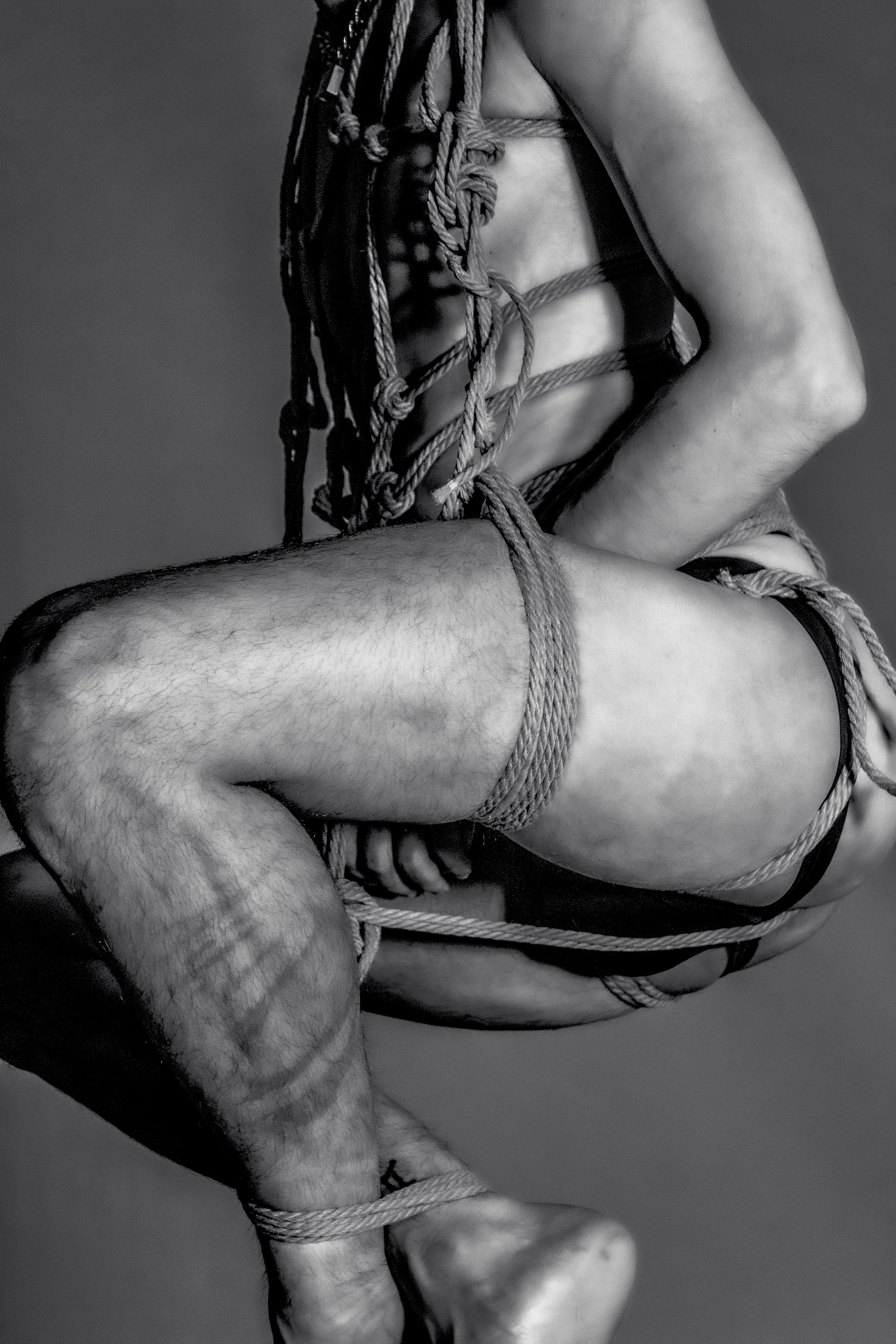
Q: Did it unlock anything within you? What did you discover about yourself in this journey?
A: I think that rope really allows for an ebb and flow of a scene. In other scenes you're focusing on being on and hard and very aggressive all the time. With the rope scene there's a lot more to a dynamic than just dominance. There's a lot more finesse and flow and a lot more give and take between two partners.

Q: In the exhibition, there was a palpable emphasis on relationships, trust and communication. Could you speak to this?
A: Yeah, so, I mean, there's so many different styles you can go into, and there's no one style that's better or worse than another, but I think that as shibari starts pushing more into the mainstream culture, or starts to have its break through a moment, it's not going to be focused around domination and pain. And that IS a dynamic you can have with rope, but I think when shibari first has its breakthrough moment, it's going to be more focused around art. It's going to be more focused around flow. It's going to be more focused around the relationship between the two partners.

Q: How have you, like, really cultivated this flow? Are there routines or mentalities you abide by?
A: Well, I don't abide by too many rules. There are some very strict shibari traditionalists out there. And I don't really put myself in that category. I definitely know a little bit of it, but I'm not a strict traditionalist in terms of shibari. My only real rule that I have for myself is I really try not to mimic or copy anyone else.
It's very much if you’re chasing what's trendy on the internet, you're never going to be trending on the internet. So I never want to like get caught up with what other people are doing. I wanna have my own ideas and really like, think about what I can do in my own space, in my own way.

Pictured: Michael
Q: Do you have advice for those curious about shibari? A: As far as people who want to come and try shibari. Try, if you can, find your local rope club meetup, your BDSM munch [a casual social gathering for those interested in the same kink], find whatever your local community is and just, you know, be open and honest. Communicate what you want and usually, if you put yourself out there, you'll have no problem finding people who are interested in the same thing you are.
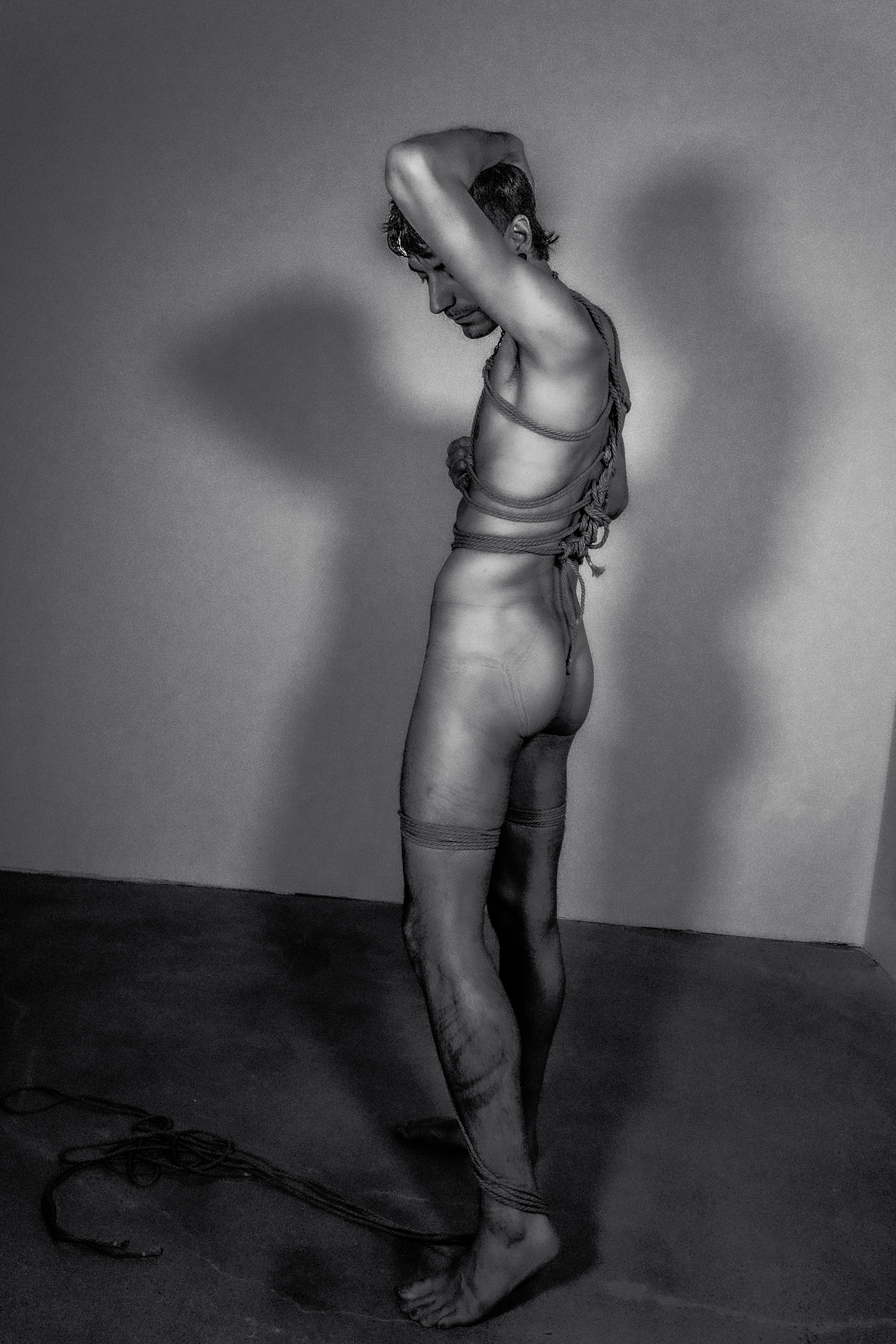
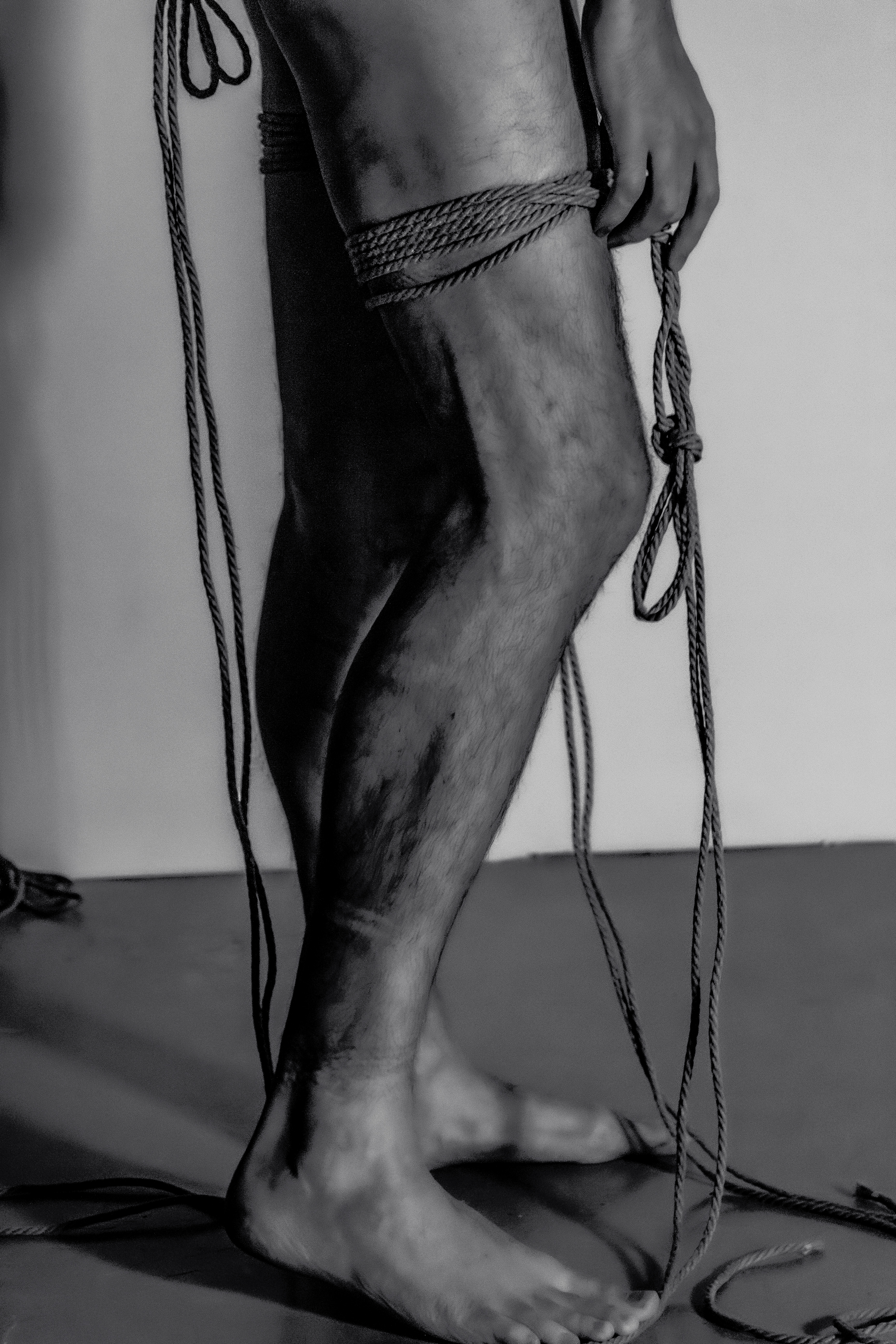

Pictured: Michael
Q: How do you situate yourself within the community? That's also what we were really struck by at the event, how sweet and nurturing this community really felt.
A: Yeah, so part of the event was building more of that community out. I won't speak for, you know, the planet as a whole, but at least in New York City I get very angry and very annoyed at how segregated the community is… especially if it's an educational space or an art space.
I really want everyone to feel like they are open and invited and welcome into any educational art space. If there's like a sexy play party I can understand why you want your subculture to be by itself at a play event. I can understand why you want your subculture to be by itself at a play event, but in an educational setting there needs to be a wide girth of who we accept.
… So it's a real serious issue that I think lies in the community. I don't think anything that is skill-based needs to be segregated out to groups.

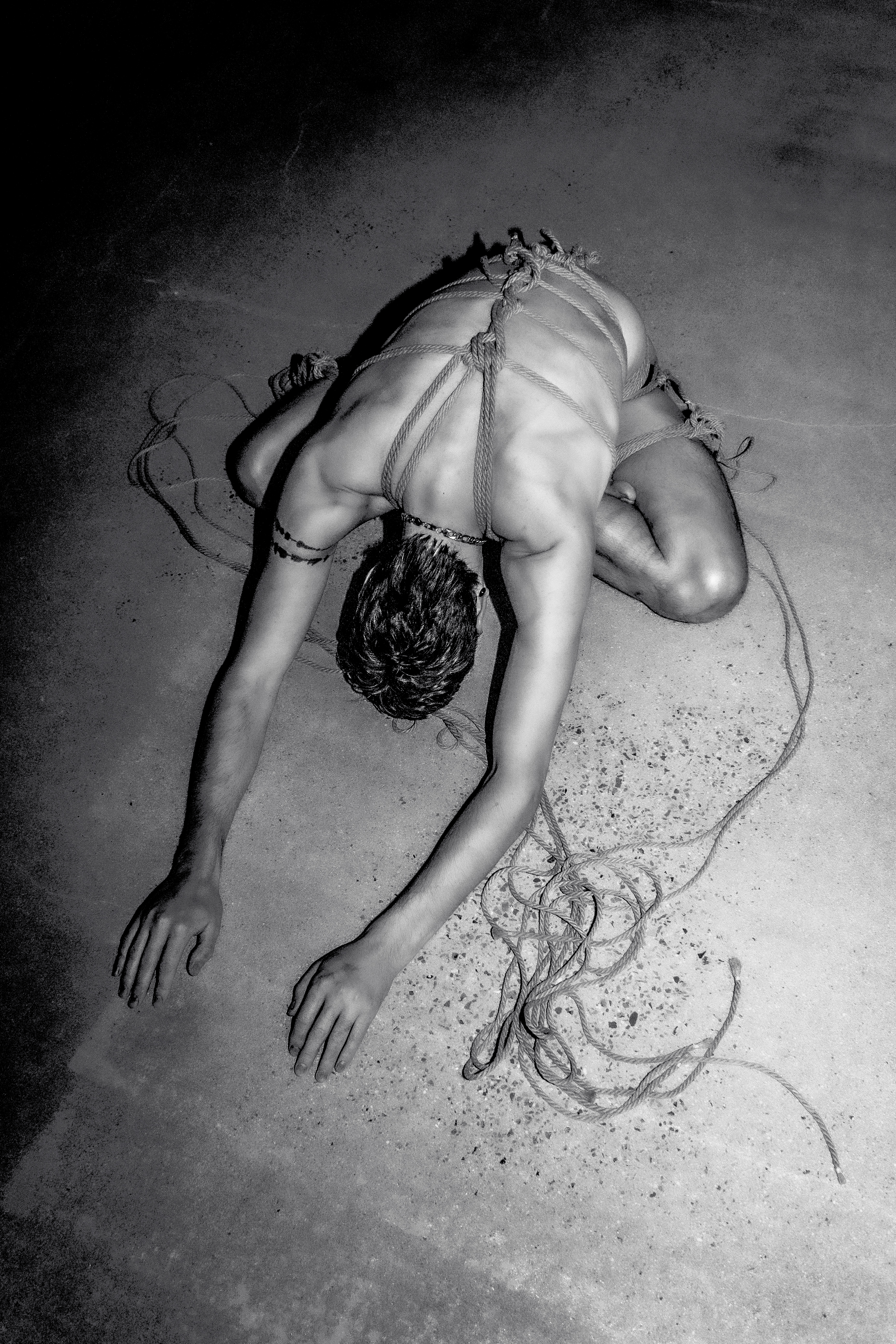
Left to Right: Alex and Michael
Q: Yeah, and I'm curious about the art space, is it just the sense of freedom or what is it specifically about art that grants this visibility?
A: I think it's the validation you get, you know, everyone who was at that event, especially Tom.
Tom has been doing this for 30 years, and he really deserves to have his space in a beautiful environment where people are not just sexualizing the work even though the work is very sexy.
Q: I know this is such a tricky question because it seems like it's so innate and impulsive, but why is it so important to remain committed to this work in terms of the actual ropes and tying that practice, and then also the service and community building that you're doing?
A: For the community as a whole, there's just too many people who are so good, but they don't have the space or the means to really do it.
And I mean, for ropes, it's how I connect with the world, with the physical tying. When I have someone come into the studio to work with me, we're there for three, four, five, six hours sometimes, and we're having lunch together, and we're tying and it's an all day process, and I’ve really figured out how I get to know people now. We sit down, we figure out a tie, we spend the day together. And so that's just how I now talk and communicate with people. And we all take these like little steps and get to know each other and we're building trust.
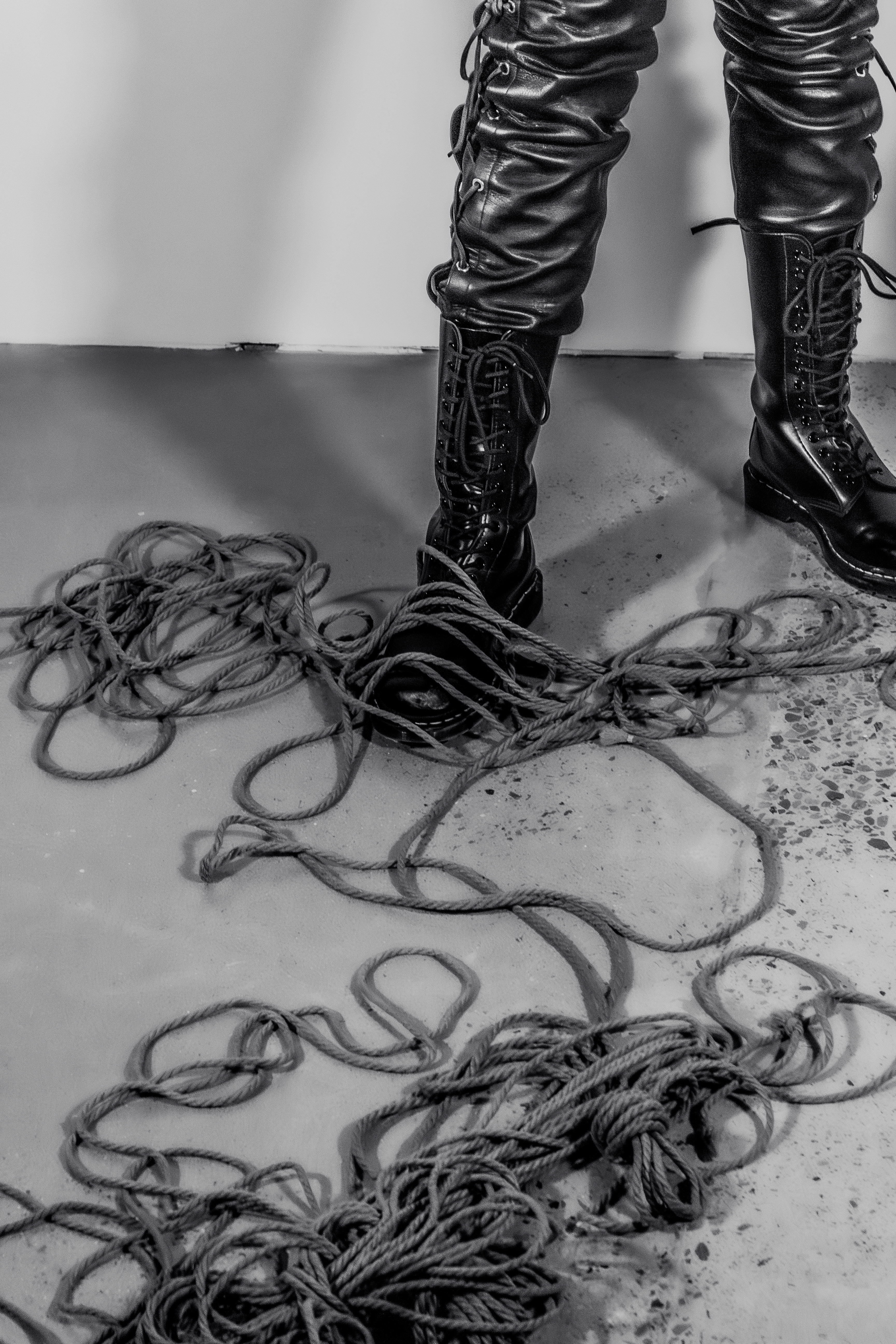
Pictured: Master R

